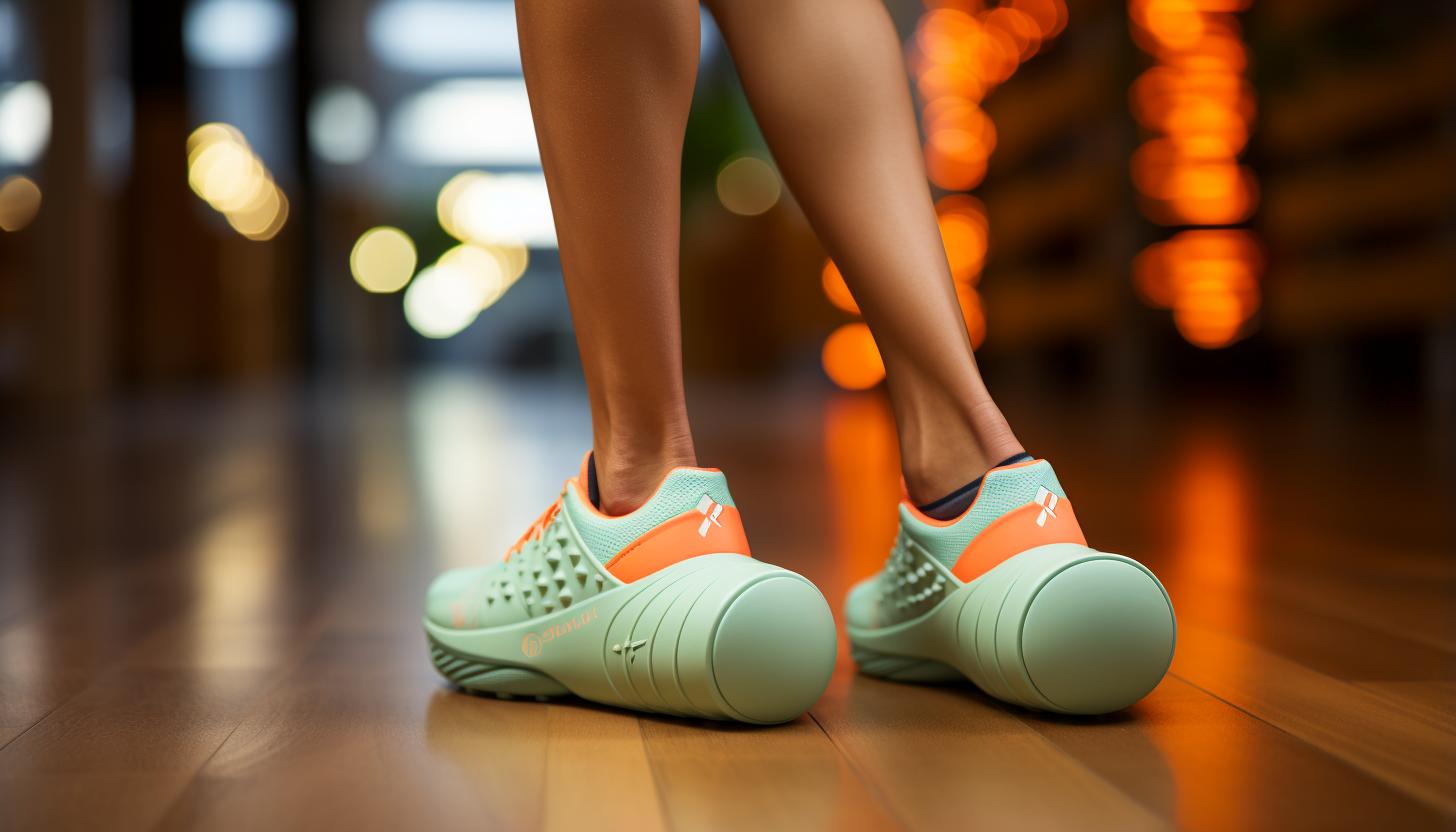The Benefits of Foam Rolling and Stretching in Post-Run Recovery

Are you tired of feeling sore and stiff after your runs? Well, we’ve got good news for you!
Foam rolling and stretching can be game-changers in your post-run recovery routine. These two simple techniques work wonders in improving flexibility, reducing muscle soreness, enhancing muscle recovery, and even preventing injuries.
So, if you’re ready to take your running performance to the next level and speed up your recovery time, grab a foam roller and get ready to stretch it out!
The Role of Foam Rolling in Post-Run Recovery

Foam rolling can help you reduce muscle soreness and improve flexibility after your run. But did you know that foam rolling also plays a crucial role in injury prevention? By incorporating this simple tool into your post-run routine, you can enhance your overall performance and protect yourself from potential injuries.
One of the key benefits of foam rolling for runners is its ability to release tension in the muscles. When we run, our muscles contract and relax repeatedly, which can lead to tightness and knots. Foam rolling helps to break up these adhesions by applying pressure to specific areas, increasing blood flow, and promoting muscle recovery.
In addition to releasing tension, foam rolling also improves flexibility. As runners, maintaining good range of motion is essential for efficient movement and preventing injuries. Regular use of a foam roller can help loosen tight muscles, increase joint mobility, and improve overall flexibility.
Improving Flexibility and Range of Motion Through Stretching

To enhance your flexibility and range of motion, make sure you incorporate stretching exercises into your routine. Stretching is an essential component of any fitness program as it not only improves mobility but also increases circulation throughout the body.
Here are three reasons why stretching should be a part of your exercise regimen:
1. Improved Flexibility: Regular stretching helps lengthen and loosen the muscles, allowing for greater joint mobility and increased range of motion. This can enhance performance in various physical activities and reduce the risk of injuries.
2. Enhanced Muscle Recovery: Stretching post-workout aids in reducing muscle soreness by promoting blood flow to the muscles, which helps remove waste products and deliver nutrients necessary for repair and recovery. It also helps relax tense muscles, preventing muscle imbalances and potential injuries.
3. Better Posture: Tight muscles can lead to poor posture, which can cause pain and discomfort in the long run. Incorporating stretching exercises that target specific muscle groups can help release tension, correct imbalances, and improve overall posture.
Reducing Muscle Soreness With Foam Rolling and Stretching

When incorporating foam rolling and stretching into your routine, it’s important to focus on targeting specific muscle groups for optimal results. By doing so, you can effectively reduce muscle soreness and aid in post-run recovery. Foam rolling works by applying pressure to the muscles, helping to break up adhesions and knots that may have formed during your run. This not only helps to release tension in the muscles but also reduces inflammation.
Stretching, on the other hand, helps improve blood circulation, which is crucial for post-run recovery. It allows fresh oxygenated blood to flow into the muscles, carrying nutrients that aid in repairing damaged tissues. Stretching also helps lengthen and relax the muscles after intense exercise.
To help you visualize how foam rolling and stretching can target specific muscle groups, here is a table outlining some common running-related muscle groups and corresponding foam rolling techniques:
| Muscle Group | Foam Rolling Technique |
|---|---|
| Calves | Calf Roll |
| Quadriceps | Quad Roll |
| Hamstrings | Hamstring Roll |
| Glutes | Glute Roll |
Enhancing Muscle Recovery and Preventing Injury With Foam Rolling

Incorporating regular foam rolling and stretching into your routine can help enhance muscle recovery and prevent injuries.
Foam rolling is a self-myofascial release technique that targets tight muscles and knots, improving their flexibility and reducing muscle tension. By using a foam roller, you can apply gentle pressure to specific areas, promoting blood flow and loosening any adhesions or trigger points.
Stretching, on the other hand, helps lengthen muscles and improve their range of motion.
Here are three reasons why incorporating these techniques can benefit you:
1. Improved Muscle Recovery: Foam rolling increases circulation to muscles, which helps deliver oxygen and nutrients needed for repair. It also reduces inflammation by flushing out metabolic waste products. Stretching aids in removing lactic acid buildup, reducing muscle soreness, and promoting faster recovery.
2. Increased Flexibility: Regular foam rolling improves the elasticity of your muscles by breaking up scar tissue and adhesions that restrict movement. This enhanced flexibility not only allows for better performance but also reduces the risk of strains or tears during physical activity.
3. Injury Prevention: Both foam rolling techniques and stretching help maintain healthy muscle balance by releasing tension in overactive muscles while activating underused ones. This balance reduces the risk of imbalances that often lead to injuries.
Boosting Performance and Speeding up Recovery Time Through Foam Rolling and Stretching

Regular foam rolling and stretching can enhance your athletic performance and expedite the time it takes for you to recover. By incorporating these practices into your post-run routine, you are giving yourself an edge in achieving optimal results.
Foam rolling is a self-myofascial release technique that helps to break up muscle knots, improve blood flow, and increase flexibility. This can lead to improved performance by enhancing your range of motion and reducing muscle tightness or imbalances that may hinder your movements. Additionally, foam rolling can help prevent muscle imbalances by targeting specific areas that tend to be overused or underused during exercise.
Stretching is another crucial component of post-run recovery. It helps lengthen muscles that have become shortened during exercise and encourages proper alignment in the body. Stretching also increases joint mobility, allowing for more efficient movement patterns and reducing the risk of injury.
Research has shown that regular foam rolling and stretching can improve athletic performance by increasing power output, speed, and agility. It also aids in preventing muscle imbalances that could lead to injuries such as strains or sprains.
Conclusion
Congratulations on completing your run!
Now that you’ve pushed yourself to the limit, it’s time to give your body the recovery it deserves.
By incorporating foam rolling and stretching into your post-run routine, you’ll reap a multitude of benefits.
Not only will these techniques improve flexibility and range of motion, but they’ll also reduce muscle soreness and enhance muscle recovery.
With regular use, you can prevent injuries and boost performance, allowing you to reach new levels of success in your running journey.
So grab that foam roller and stretch those muscles – your body will thank you!






